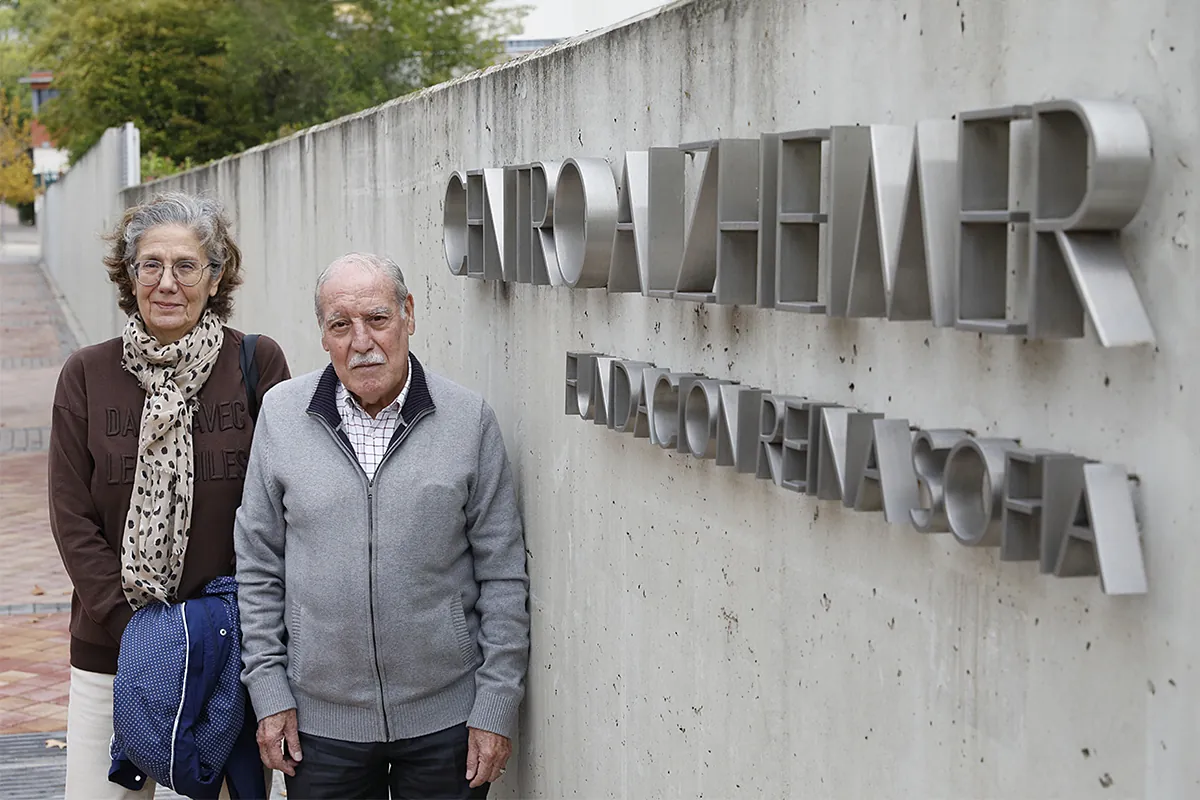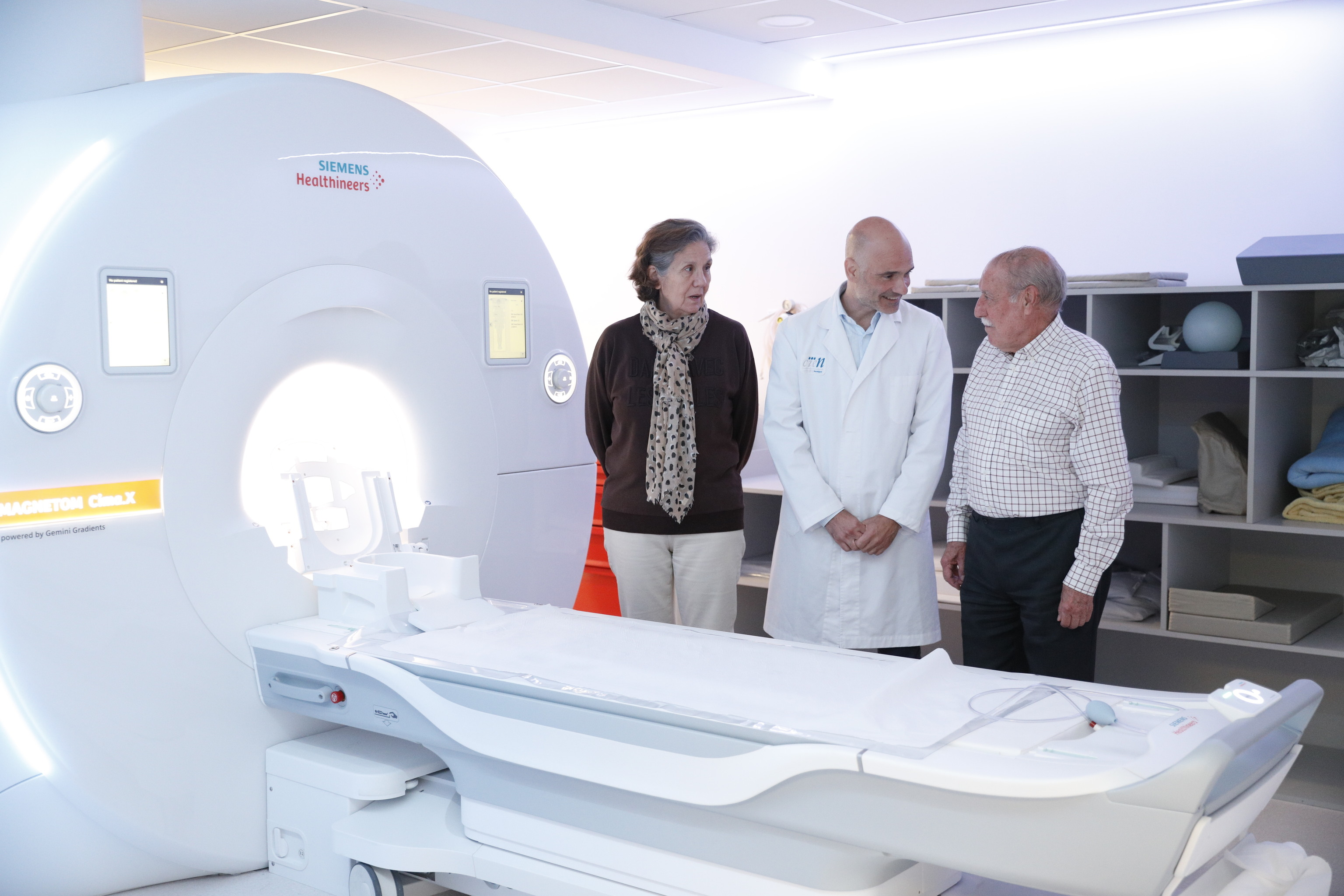Investigation. “This is the only thing that helps us find something else, to know how it happens.” Luisa is clear. She is convinced that the way that can decipher why neurodegenerative diseases are present in her family is “a box in the income to support research”. His father died of ALS (amyotrophic lateral sclerosis) and his mother lives trapped in the devastating consequences of Alzheimer’s disease.
That determination is enough to become one of the first volunteers in the Neurological Diseases Research Center Foundation (CIEN) program to find key clues in the disease in the general population. Under the acronym SCAP-AD, which responds to Cognitive Screening and Personalized Approach for Alzheimer’s and other Dementia, a series of tests are encompassed that seek to validate new diagnostic methods reproducible in the general population in the early detection of neurodegeneration. “When they told me, I didn’t doubt it,” says Luisa.
It is a program that look for signs of Alzheimer’s“how it is hidden in healthy people, who do not know that they are going to have it, but have genetic traits that predispose them,” explains Pascual Sanchezneurologist and Scientific Director of the foundation, attached to the Carlos III Health Institute, which has the support and additional financing of the Reina Sofía Foundation. They invite everyone to the studio. Some of it can be done using online tools. Another is held at the foundation’s headquarters. “We are in an initial phase and we will see how it is transferred to other centers.”
Through the projectscapad.es websiteIf you are over 60 years old, you can take a test that assesses the risk of developing cognitive impairment in the coming years. “We have validated a series of digital tools that allow us to distinguish, based on the results obtained, who has some trait of Alzheimer’s or a greater risk of dementia,” explains Sánchez. The neurologist distinguishes the two parts of the program at hand. “One of them is a digital cohort that will allow exploring the use of an online cognitive assessment through a web platform.
On the other hand, “it will generate a wide clinical validation cohortalso aimed at people over 60 years of age, without a diagnosis of dementia. In this case the studies require other types of tests «to carry out a more in-depth study», details the neurologist. “Neurological and neuropsychological evaluations, biomarker analysis, including ultrasensitive blood techniques and magnetic resonance imaging tests are included.”
This is because one of the tests performed is an MRI with one of the most advanced equipment in Spain. «There is no other in our country and it allows us to capture details that others cannot», emphasizes the director of the center. What escapes the clinical eye and the researcher to make that diagnosis? «We are facing a disease in which there is no single failure or pathological source. There are many and we have to see how each one influences,” Sánchez acknowledges.
Luisa and Jesús, together with Pascual Sánchez, neurologist and director of the CIEN Foundation in the Magnetom Cima.X resonance room.
Early detection is key. «We may not have the drugs available in Europe now. But it is a matter of time,” Sánchez encourages. These drugs arrive late for the most deteriorated patients, but early for all those cases that are still out there without a label of dementia or Alzheimer’s. Because the projections about the increase in cases are catastrophic.
In the last 30 years The numbers of deaths from neurological disease have increased by 39% and the years of life with disability by 15%, point out from the Spanish Society of Neurology (SEN). In the last 10 years, the number of people affected by diseases such as Parkinson’s and dementias such as Alzheimer’s has doubled.
And the cascade of figures that outline the impact are shocking: Currently some 800,000 Spaniards suffer from Alzheimer’s (1.2 million according to CEAFA)but it is estimated that 80% of mild cases are undiagnosed; Thus, between 30 and 40% of total cases are not detected.
“Getting to this stage that my mother is in now, so deteriorated, has been slow. I know that in others it goes faster”
find those initial features and diagnosing is a key to stopping the disease before it evolves to stages in which neuronal damage steals the person’s autonomy and “it is difficult to turn back,” agrees the neurologist. The web platform «is a study where the volunteer answers a series of questions about demographic and clinical data. In addition, take a brief spontaneous language test lasting one minute. The results will be used in this study for research purposes,” explains Isabel López, coordinator of SCAP-AD.
The Spanish Confederation of Alzheimer’s and other dementias (Ceafa) has joined the project, “with which we have worked to see the tests and questionnaires,” says Sánchez. Through these tests, natural language is used to determine the risk, “how we are able to describe a picture of a beach hides a series of patterns that determine the risk,” explains the neurologist. Besides, 13 centers from eight autonomies participate and it has been possible thanks to the financing of the Next Generation funds from the European Union.
Why volunteer against Alzheimer’s?
Luisa is motivated by her mother’s situation, an independent woman whom he has seen fade away little by little. «Getting to this stage where it is now, so deteriorated, has been slow. I know that in others it goes faster. «In my family the only thing we have had was leukemia. But on a neurological level, my mother is the only one who has had Alzheimer’s and my father was the first with ALS. When carrying out the study on Luisa, they found a neuronal polyneuropathy, “but it has nothing to do with this. “I know,” he nods, looking at the director of the CIEN Foundation.
“They are very generous people,” emphasizes Sánchez. Jesús, another volunteer, understands it as a round-trip generosity. «With everything they have done for my wife, what less!» He gets emotional while talking about his wife’s situation. He has been in the residence in the foundation complex for about six months. “We were very lucky, I know, to end up here.”
Jesus says that She has lived with Alzheimer’s for more than a decade.«but then we didn’t believe it would end like this. “You don’t think about it.” He admits that it is hard, his face leaves no doubt. Seeing how the traveling companion he chose “forgets almost everything” is “a ruin.” His eyes almost overflowed, but he says that “when they told me they were investigating, I didn’t doubt it. If not for her, it will be for others.
“There are many types of patients, each one with an evolution. The program will help us find the details that we miss”
For those who come behind, says Luisa. “My mother is now 94 years old, but she has had the disease for more than 20 years.” How can you live with neurodegeneration for so long? “It is not known,” Pascual acknowledges. There is no typical profile, “there are many types of patients, each with a different evolution. That’s why we want to know more through programs like this, that help us reveal the secrets, the details that escape us.”
These changes can be revealed thanks to the latest generation technology that they have acquired at the center. This is the first unit in Europe of Magnetom Cima.X, a system developed by Siemens Healthineers. Sánchez shows off the new equipment when we go down with the volunteers to visit the machine. “The truth is that it doesn’t feel overwhelming,” says Luisa. “Everything was very fast,” adds Jesús.
In addition to the online test, analysis and lumbar puncture, both have undergone MRI to scrutinize the corners of their hemispheres, brains… “The level of detail is very high,” says Sánchez. The images it captures allow us to see if there are injuries in the temporal and parietal lobes, which give rise to symptoms of dysphasia or dyspraxia; especially if these are patients with a family history. Damage is also seen in the hippocampus, temporoparietal and frontal cortex, in the general population in whom dementia begins later.
Along with the images, Sánchez highlights the plasma analysis, in addition to the lumbar puncture. “It is also necessary to know the genetic biomarkers in the blood, because it has already been shown that they can be used to find clues to neurodegeneration,” he emphasizes. Then, “With everything we obtain we can ensure that these new technologies are accurate and economical to apply them to a large population,” says the neurologist who draws a kind of refined early detection protocol. «It is not a single test or test, it is surely more accurate to have several. And whether independently or combined through artificial intelligence, they will offer us answers.
The importance of early detection of Alzheimer’s
Detecting the first signs of the disease “will make it possible interventions in very early stages», emphasizes Sánchez. Sometimes, those first moments go unnoticed by family members: “The patient already notices that he has something, but he doesn’t know how to act.”
«My mother had a phase in which she hid her symptoms. His life was very mechanical (ordered). I had general answers. What have you eaten, mom? Puree of what? And here you caught it, with vegetables. Which is it? I don’t know”. Luisa looks at Sánchez during the conversation we have with the volunteers and the researcher, seeking complicity in his response.
“When they told me they were investigating, I didn’t doubt it. If not for her, it will be for others”
«There are phases with common symptoms that patients share. And yes, the automatic response to everything is a trait,” says the neurologist. Jesus remembers that stage when his wife said yes to everything. «Shall we go out? Okay. Do we eat out? Okay”. He acknowledges that “at first we didn’t give it importance, we didn’t even think about the disease. But little by little it took hold of her.
Although there are things that are not forgotten. «There are songs that you remember, that we sing». Jesus smiles in the hope that it is a positive symptom of the illness. “In fact, music is stored in another part of the brain that takes longer to damage,” Sánchez responds to the doubt.
But before it sounds like a bucket of cold water, the neurologist is quick to say that “patients do not lose connection with family memberswith those closest to you. We know that there remains a connection that allows them to be recognized. “They always know you are there.”

